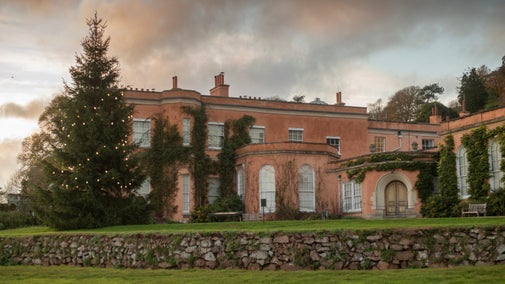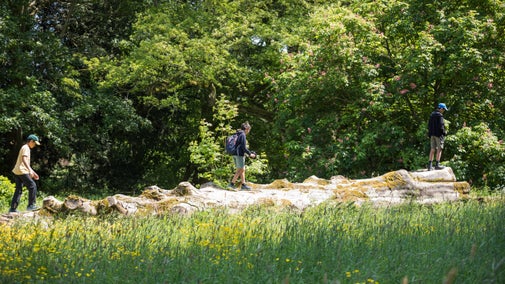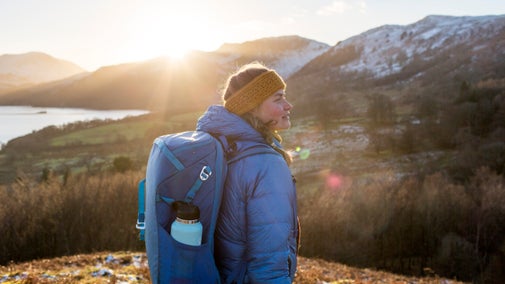
Discover Ashclyst Forest
Find out how to get to Ashclyst Forest, where to park, the things to see and do and more.

Ashclyst Forest is one of the largest woods in East Devon and a haven for butterflies, bluebells and birds. It's the perfect place to reconnect with nature whether it's for a family ramble or dog walk.
Ashclyst forest is in the heart of the Killerton estate, once owned by the Acland family. The estate has over 700 hectares of woodlands and Ashclyst was planted just over 100 years ago by Sir Francis Acland. This was in direct response to the shortage of wood after the First World War. Sir Francis was also influential in setting up the Forestry Commission at that time.
Ashclyst Forest consists of natural woodland pasture, commercial conifer plantations, coppice coups and even rare wet woodland. Trees such as oak, hazel, beech and ash provide a wonderful habitat for a rich variety of wildlife.
Ashclyst is home to many species of wildlife and is the perfect place to connect with nature and listen to the birdsong. Bluebells carpet the woodland floor in spring, deer can be spotted, and nesting birds fill the tree top canopy, with nightjars churring in summer evenings.
Butterflies are the main wildlife attraction in Ashclyst. The mix of habitats supports a great variety, although they fly at different times of the year. The rarest butterflies are the white admiral, small pearl-bordered fritillary, dark green fritillary and silver-washed fritillary. You can expect to see orange-tip, ringlet, common blue, large skipper, gatekeeper, speckled wood, marbled-white, green-veined white, purple hairstreak, brown hairstreak and brown argus too.

With more people than ever enjoying our coast and countryside places, we’re asking for your help in looking after them during your visit. Please help us protect wildlife and landscapes by following the Countryside Code, which includes taking any litter home with you, and not lighting a barbecue or campfire.
Dogs are welcome at Ashclyst forest and it’s a great place for a walk. Please keep dogs under close control and on a lead around livestock. Please be aware that there are no dog poo bins onsite. Leaving bagged waste in the countryside is a hazard to wildlife and livestock so please take bagged waste home with you.
Our definition of close or effective control is:
Ashclyst forest is also managed woodland, as Sir Francis Acland had originally planned. All woodlands on the estate have a woodland management plan, which are approved by the Forest Commission. Alongside this, the Trust has signed up to the United Kingdom Woodland Assurance Scheme (UKWAS) which means there are strict rules on how the Trust manages its woodland, especially for re-planting new trees.
The forest was designed and planted to grow timber to be used on the estate. Timber is still harvested from the forest today, ensuring there are trees left in each area to become the veteran trees of the future.
Timber that leaves the estate is normally sent to local timber mills to be turned into paper, building materials or biomass, and generates income for Killerton. Occasionally benches and fences are made for the estate - take a seat and enjoy the view from the wooden sofa at the top of the Clump.

Find out how to get to Ashclyst Forest, where to park, the things to see and do and more.
With acres of woodland, vital conservation work takes place on a regular basis to keep Ashclyst Forest and the wider Killerton Estate protected for future generations.

Explore the forests, orchards and parkland on the vast estate at Killerton and discover the creatures that live here, from Highland cows and dormice to bats and butterflies.

Killerton’s estate is an important wildlife haven, but is threatened by climate change. Thanks to the Green Recovery Challenge Fund, projects have been completed to protect its grounds.
A family home and a great estate. Glorious landscape garden surrounded by parkland with fine 18th-century house.

Plan a visit to one of the special countryside places in our care and discover the benefits of being in the great outdoors. Pack your walking boots and get ready to explore woodlands, valleys and rivers.

Explore some of the finest landscapes in our care on coastal paths, accessible trails, woodland walks and everything in between. Find the best places to walk near you.
